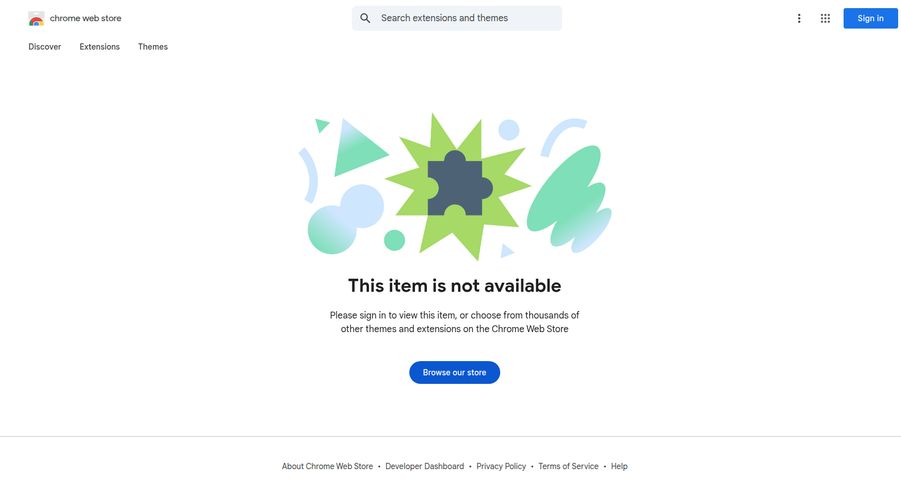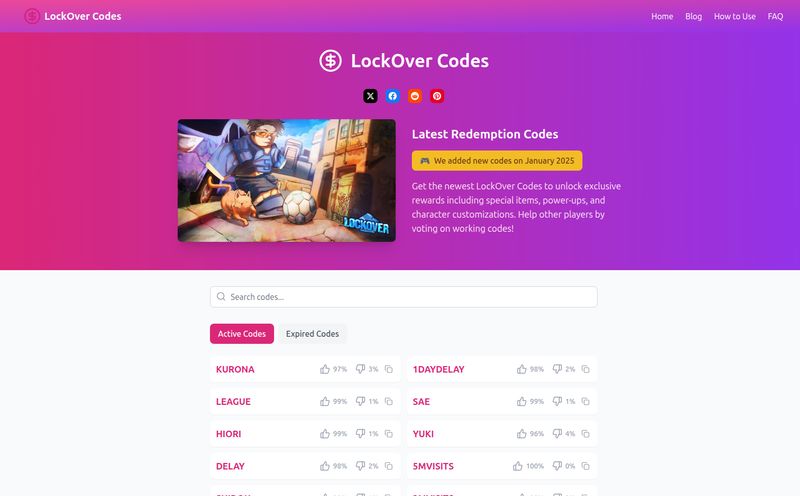If you're anything like me, your inbox and social feeds are probably a relentless firehose of 'revolutionary' new AI tools. Every single day. It's gotten to the point where AI fatigue is a very real thing. Another AI-powered productivity platform? Groundbreaking. I've seen so many of them that they all start to blur into a single, vaguely promising, often disappointing blob of tech.
So, when Nex AI crossed my desk, my first reaction was, admittedly, a bit of an eye-roll. But I've been in the SEO and content game long enough to know that sometimes, just sometimes, there’s a gem hiding in the pile. The promise was simple: an AI tool for knowledge workers that's actually easy and effective. No steep learning curve, no confusing interface. Just a straight-up productivity boost.
Is it true? Or is it just another drop in the ocean? I decided to put on my skeptic's hat (it's a well-worn one) and see what Nex is really all about.

Visit Nex AI
So, What's the Big Deal with Nex AI?
At its core, Nex AI positions itself as a creative and productive partner for 'knowledge workers'. That's a pretty broad term, but think of us: the writers, marketers, researchers, analysts, students... anyone whose job involves wrangling words and ideas. Nex isn't trying to be a one-click article generator or a soulless content spinner. Instead, it feels more like a souped-up writing environment, a digital co-pilot that lives right inside your document.
It’s designed to help you generate ideas, improve your writing, and organize your thoughts without having to constantly jump between five different tabs. We’ve all been there—a Google Doc for drafting, ChatGPT for ideas, a thesaurus site for word choice, and maybe a grammar checker for polish. The idea behind Nex is to bring all of that into one, cohesive space. A noble goal, for sure.
Diving Into the Features: My First Impressions
A tool is only as good as its features, right? Here’s a breakdown of what Nex brings to the table and my gut reaction to each.
Finally, Seamless Document Handling
This was the first thing that caught my eye. Nex lets you import existing Word documents and work within a rich text editor. Thank goodness. I can’t tell you how many AI tools I’ve tried that force you into a bland, plain-text box. It feels like writing in Notepad from 1998. As a writer, formatting matters. Headings, bold text, italics, lists—they help structure thought. Being able to bring in a document I’ve already started, or to just write in an environment that feels like a proper word processor, is a huge plus. It’s a small detail, but it shows they understand how writers actually work.
Prompt Templates for the Uninspired
We’ve all stared at that blinking cursor on a blank page, haven’t we? It’s the universal symbol for “I have no idea where to start.” Nex includes prompt templates to help you get the ball rolling. I view these less as a crutch and more as a jumpstart. Think of it like a brainstorming partner who throws out a few thought-starters. For creating blog post outlines, drafting an email campaign, or even just summarizing a chunk of text, these templates can be a genuine time-saver, helping you overcome that initial inertia.
The Built-in AI Chat: Your Research Intern
Okay, this is where things get interesting. Nex has an AI chat function built directly into the interface. My immediate thought was, “Why not just use ChatGPT?” But the value here is in the integration. You don't have to break your creative flow. Instead of alt-tabbing away from your document, you can ask the chat to find a statistic, explain a complex topic, or suggest a different angle—all without leaving your workspace. It’s like having a research intern on standby, ready to fetch information as you need it. This tight integration is the kind of workflow improvement that can genuinely boost productivity.
Highlight and Improve: The Magic Wand Effect?
This is probably the headline feature. You can highlight any piece of your text and ask the AI to improve it. Rephrase this sentence. Make this paragraph more concise. Change the tone to be more professional. It’s an appealing concept, acting like an on-demand editor. In my experience, features like this can be a bit hit-or-miss across different platforms. Sometimes the suggestions are brilliant, other times they're just… weird. The effectiveness will likely depend on the quality of the underlying AI, which, as we'll see, is a bit of a black box with Nex.
The Good, The Bad, and The... Vague
No tool is perfect. After playing around with it, here's my honest take on where Nex shines and where it stumbles a bit.
What I Genuinely Liked
The biggest pro for me is the synergy of the features. It's not just a collection of separate tools; it's a thought-out ecosystem. The ability to import a doc, chat with an AI for research, use templates for structure, and then refine text with a highlighter tool is a very smooth workflow. It feels like it was designed by someone who actually writes for a living. It’s less about replacing the writer and more about augmenting them, which is a philosophy I can get behind. In a world full of blunt AI hammers, Nex feels more like a sophisticated multi-tool.
A Few Sticking Points
Now for the not-so-great. First off, you need to create an account to use it. This is a minor annoyance in the grand scheme of things, but it’s a barrier to entry, however small. I always prefer to be able to test-drive a tool before handing over my email.
The bigger issue, for an SEO nerd like me, is the limited information on its specific AI capabilities. What AI model is this running on? Is it OpenAI's GPT-4? Google's Gemini? An in-house model? This isn't just a trivial detail. As guys like Matt Diggity and other SEO pros have pointed out, the quality of the underlying Large Language Model (LLM) dramatically affects the output's nuance, factual accuracy, and overall quality. Without knowing what’s under the hood, it's hard to judge its true power or predict how its output will perform in SERPs. It leaves me feeling a bit in the dark.
The Million-Dollar Question: What's the Price?
And here we come to the biggest mystery of all: the pricing. As of this writing, I couldn't find a pricing page. Nothing. Zip. This could mean a few things. It might be in a free beta phase, which is great for early adopters. It could be moving to a custom-quote model for teams. Or, maybe the pricing page is just well-hidden. Whatever the reason, the lack of transparent pricing makes it difficult to fully evaluate. It’s hard to recommend a tool without knowing if it's going to be a $10/month subscription or a $1000/year enterprise solution.
Who Is Nex AI Really For?
Based on its feature set, Nex AI seems tailor-made for a specific crowd. If you're a content creator, a blogger, a marketing copywriter, or a student working on research papers, this tool could fit right into your workflow. The focus on document editing and integrated research makes it particularly useful for anyone who produces long-form content. If your day involves turning rough ideas and research into polished, well-structured text, Nex is speaking your language. It's probably less useful for, say, a social media manager who primarily needs image generation or short-form video ideas.
FAQs about Nex AI
Is Nex AI free to use?
It's unclear. There is no public pricing page available right now, which could suggest it's currently in a free beta or testing phase. You do have to sign up for an account to access the tool.
Can I use Nex AI without creating an account?
No, one of the current requirements is that you must sign up and create an account to access its features. This is a common practice but can be a small hurdle for users who want to try it out first.
What kind of documents can I import into Nex?
The platform explicitly mentions the ability to import Microsoft Word documents. This is a great feature for continuing work on existing drafts without a painful copy-paste process.
How is Nex different from just using ChatGPT?
The main difference is integration. While ChatGPT is a standalone chatbot, Nex integrates AI chat, text improvement tools, and document editing into a single, cohesive workspace. The goal is to improve your workflow and prevent you from having to constantly switch between different applications.
Is Nex AI good for SEO content?
Potentially, yes. Its features for outlining, drafting, and refining text can certainly speed up the content creation process. However, as with any AI tool, the output needs a human touch for fact-checking, brand voice, and strategic keyword placement. Since we don't know the underlying AI model, its raw output quality for SEO is still an open question.
What AI model does Nex use?
This information is not publicly available. The company provides limited details on its specific AI capabilities, so we don't know if it uses a model like GPT-4, Gemini, or a proprietary one.
Final Thoughts: Is Nex Worth Your Time?
So, we circle back to the original question: is Nex AI just another tool in a crowded market? My answer is a solid... maybe. And I mean that in the best way possible.
It’s not trying to reinvent the wheel, and that’s its strength. Nex AI appears to have focused on solving real-world workflow problems for writers. The combination of a good editor, document import, and integrated AI assistance is genuinely compelling. It feels practical. Grounded.
The lack of transparency on pricing and the specific AI model are definite drawbacks for me. But if it's currently in a free beta, there’s literally no risk in taking it for a spin. If you're a knowledge worker who feels like your creative process is scattered across too many browser tabs, Nex AI might just be the streamlined, focused environment you've been looking for. It's got promise, and I'll certainly be keeping an eye on it.
References and Sources
- Information about Nex AI's features was sourced from its own introductory materials.
- For further reading on the importance of different LLMs in content quality, I'd suggest looking into discussions on platforms like Search Engine Journal, which often covers the practical SEO implications of various AI models.



